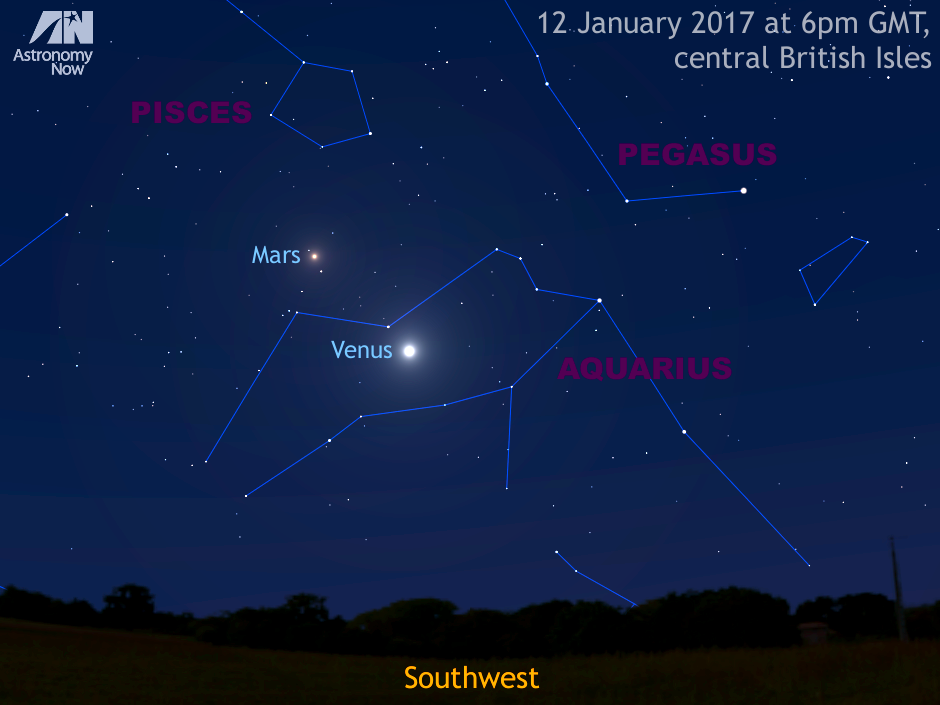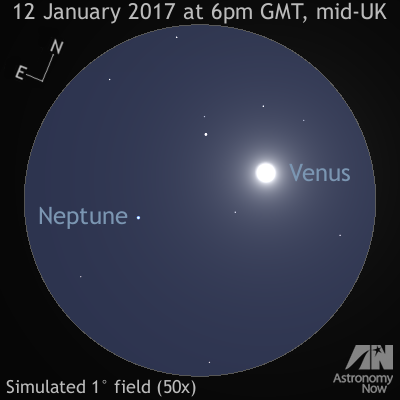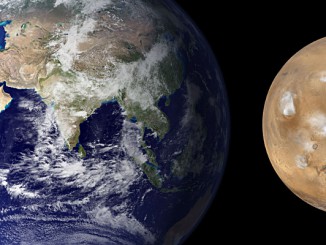
Magnitude -4.4 Venus presently lies in the constellation of Aquarius, moving into Pisces on 23 January. In a telescope, the planet has a disc almost 25 arcseconds across and currently appears almost exactly half illuminated — just like a miniature first or last quarter Moon (depending on your telescope view).
By the end of January, Venus will be even brighter at magnitude -4.6, its size increases to 31 arcseconds and its phase shrinks to a 40 percent crescent as it grows closer to Earth. Venus attains its greatest elongation of slightly more than 47 degrees east of the Sun on Thursday 12 January, setting 4½ hours after the latter as seen from the heart of the British Isles.
How far can Venus get from the Sun?
Since the orbit of Venus lies within that of the Earth, we can never see the planet opposite the Sun in the night sky. Venus is therefore constrained to a band of sky within about two spans of an outstretched hand at arm’s length either side of the Sun, either in the western sky after sunset (as now), or in the eastern sky before sunrise.
In the current epoch, Venus doesn’t get farther than 47 degrees from the Sun at westerly elongations when it is visible at dawn. However, at easterly elongation when the planet is visible at dusk, Venus’ angular separation from the Sun can exceed 47 degrees — particularly if greatest easterly elongation occurs in early January when the Earth is closest to the Sun.
The farthest evening eastern elongation of Venus that occurred in recent memory was 47° 09′ on 8 November 1989. This month, Venus manages an angular separation of 47° 08′ from the Sun at 13:08 UT on 12 January 2017. We will have to wait until 10 January 2025 for a greater easterly elongation (47° 10′), but even that will be topped by the 47° 11′ Venus—Sun separation of 7 January 2033.
Venus and Neptune get close
On this evening, gas giant Neptune lies just 23 arcminutes (almost 0.4 degree) to the southeast of its dazzling planetary sibling. This means that at magnifications of 100x or less, it is possible to get both planets in the same telescope field of view. However, given Venus’ brilliancy — it’s presently in excess of 80,000 times brighter than magnitude +7.9 Neptune — the glare will make the most distant planet hard to make out.
The accompanying graphic shows a simulated 1-degree-wide telescope view (approximately 50x magnification) of both Venus and Neptune against the stellar backdrop of the constellation Aquarius at the onset of darkness for the heart of the British Isles. This is an erect-image view as depicted by a terrestrial telescope. Users of Newtonian/Dobsonian instruments should rotate the graphic 180° to match the eyepiece view, while observers with refractors, Schmidt- and Maksutov-Cassegrain telescopes equipped with a star diagonal should mirror the view left-right.
Inside the magazine
For a comprehensive guide to observing all that is happening in this month’s sky, tailored to Western Europe, North America and Australasia, obtain a copy of the January 2017 edition of Astronomy Now.
Never miss an issue by subscribing to the UK’s biggest astronomy magazine. Also available for iPad/iPhone and Android devices.




